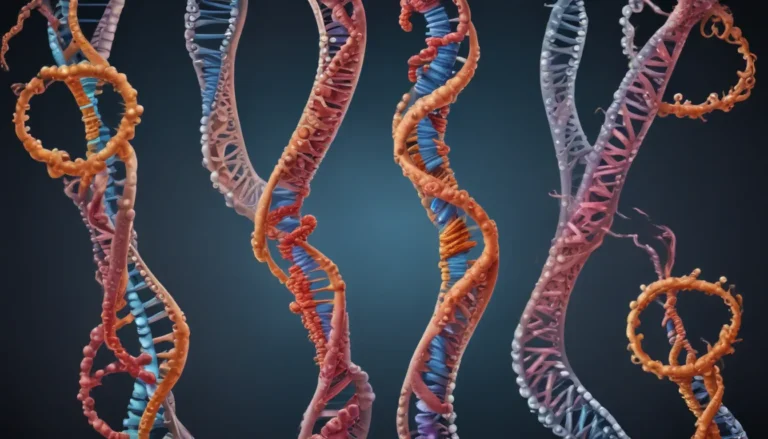A Note About Images: The images used in our articles are for illustration purposes only and may not exactly match the content. They are meant to engage readers, but the text should be relied upon for accurate information.
Are you ready to embark on a journey into the captivating world of Euglena? This single-celled microorganism has been thriving on Earth for millions of years, intriguing scientists and nature enthusiasts with its unique characteristics. Join us as we unveil 19 intriguing facts about Euglena that shed light on its fascinating peculiarities, from its ancient origins to its potential for medical applications.
Ancient Origins of Euglena
Euglena’s resilience is truly remarkable, with fossil records dating back to the Late Precambrian period. This microorganism has survived through countless environmental changes over millions of years, showcasing its adaptability and endurance.
Diverse Habitat of Euglena
One of the most fascinating aspects of Euglena is its ability to thrive in various aquatic environments, including freshwater, saltwater, and brackish water. From ponds and lakes to oceans across the globe, Euglena’s adaptability knows no bounds.
The Unique Cell Structure of Euglena
Take a closer look at Euglena, and you’ll notice its elongated cell shape with a whip-like tail called a flagellum. This structure allows Euglena to move through the water with ease, seeking out the optimal conditions for growth and survival.
Photosynthetic Marvel: Euglena’s Chloroplasts
Euglena’s possession of chloroplasts enables it to undergo photosynthesis, just like plants. These specialized organelles play a crucial role in converting sunlight into chemical energy, providing Euglena with a source of sustenance.
The Mixotrophic Nature of Euglena
While Euglena can produce its own food through photosynthesis, it can also switch to a heterotrophic mode of nutrition when sunlight is scarce. In such instances, Euglena feeds on organic matter in its environment to meet its energy requirements.
The Eye Spot: Euglena’s Sensory Organelle
Euglena features a unique sensory organelle called an eye spot or stigma, which is sensitive to light. This organelle helps Euglena detect the intensity and direction of light, allowing it to move towards or away from light sources as needed.
Vibrant Coloration in Euglena
Some species of Euglena showcase a dazzling array of colors, ranging from green and red to yellow and brown. These pigments not only protect Euglena from harmful UV radiation but also aid in the absorption of sunlight for photosynthesis.
Reproduction Strategies of Euglena
Euglena primarily reproduces asexually through binary fission, a process where the cell divides into two identical daughter cells. This mode of reproduction ensures rapid population growth for Euglena.
Beyond Asexual Reproduction: Conjugation in Euglena
Under unfavorable conditions, Euglena can engage in sexual reproduction through a process known as conjugation. During conjugation, two individuals exchange genetic material, promoting genetic diversity within the population.
The Oxygenation Role of Euglena
As Euglena performs photosynthesis, it releases oxygen as a byproduct, contributing to the oxygenation of aquatic environments. This vital process benefits other organisms in the ecosystem, showcasing Euglena’s ecological significance.
Bioremediation Potential of Euglena
Euglena’s ability to absorb pollutants from water bodies makes it a valuable player in bioremediation efforts. By removing heavy metals, organic compounds, and other harmful substances, Euglena helps purify aquatic environments.
Harnessing Euglena as a Source of Biomass
Due to its rapid growth and high protein content, Euglena holds promise as a source of biomass for various applications. From animal feed to biofuels and nutritional supplements, Euglena offers a versatile and sustainable resource.
Extremophile Adaptations in Euglena
Some species of Euglena have evolved to thrive in extreme environments, such as high salinity levels or acidic conditions. These adaptations showcase the remarkable diversity and resilience of Euglena as a microorganism.
Euglena as a Sensitive Bioindicator
Euglena’s responsiveness to environmental factors makes it a valuable bioindicator for monitoring changes in its habitat. From light intensity and nutrient availability to pollution levels, Euglena’s sensitivity highlights its role in environmental monitoring.
The Role of Euglena in Space Research
Scientists have taken an interest in studying Euglena’s adaptability in various conditions, including microgravity. Experiments involving Euglena on space missions provide valuable insights into its response to extraterrestrial factors, hinting at its potential significance beyond Earth.
Exploring Medical Applications of Euglena
Certain compounds derived from Euglena, like paramylon, exhibit antimicrobial properties with potential applications in the development of antibiotics and antifungal drugs. Research into Euglena-based substances highlights its promising role in medical advancements.
Solar Technology Inspiration from Euglena
Euglena’s unique light-harvesting abilities have inspired researchers in the field of solar technology. By studying Euglena’s photosynthetic apparatus, scientists aim to improve the efficiency of solar cells, drawing inspiration from nature’s design.
Educational Value of Euglena
Euglena serves as an excellent model organism for educational purposes, offering students and researchers an accessible subject for studying cell biology, photosynthesis, and ecosystem interactions. Its simplicity and versatility make it a valuable resource for learning about life sciences.
Euglena: A Biodiversity Treasure
The incredible diversity and adaptability of Euglena make it a treasure trove for biodiversity exploration. Scientists continue to uncover new species and delve into the genetic intricacies of Euglena, expanding our understanding of life on Earth.
Conclusion: Embracing the Enigma of Euglena
Euglena, with its blend of plant-like and animal-like characteristics, stands as a testament to the wonders of the natural world. From its essential role in oxygen production and biofiltration to its adaptability in extreme environments, Euglena continues to captivate and inspire researchers worldwide. As we unravel the mysteries of Euglena, we gain a deeper appreciation for the resilience and diversity of life on our planet.
Frequently Asked Questions (FAQs) About Euglena
Can Euglena be harmful to humans?
While most species of Euglena are harmless, some can produce toxins under specific conditions. Caution is advised when encountering unknown Euglena species.
How do Euglena cells move?
Euglena cells move using their flagellum, a whip-like tail that propels them through the water, aiding in navigation.
Is Euglena visible to the naked eye?
Euglena cells are microscopic and require a microscope for proper observation, as they are not visible to the naked eye.
Can Euglena survive in extreme temperatures?
Euglena species exhibit varying tolerances for extreme temperatures, with some thriving in freezing conditions and others in hot springs with high temperatures.
Are Euglena cells found on land?
While Euglena cells can occasionally be found in moist soil or damp surfaces, they are primarily aquatic organisms inhabiting various water bodies.
How do scientists classify Euglena?
Euglena belongs to the genus Euglena within the phylum Euglenozoa and is further categorized into different species based on distinct characteristics.
Explore, Learn, and Discover with Us!
Our commitment to delivering accurate, engaging, and trustworthy content drives our mission to share fascinating facts with our readers. Each contribution is a result of real user insights, ensuring a diverse and credible source of information. Trust in our dedication to quality and authenticity as you embark on a journey of exploration and discovery with us.






